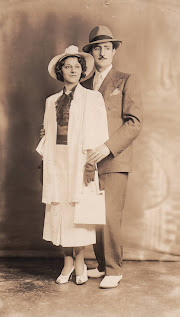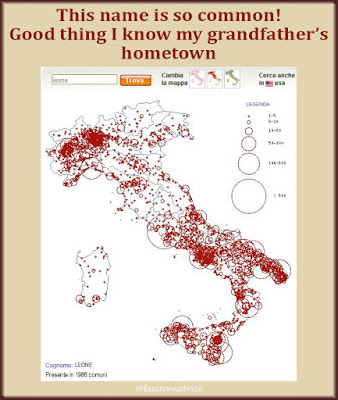UPDATE: Publishing this story drew the attention of several of my relatives. We're now feeling a bit confident that my Uncle Army was in the Army Air Corps. His nickname had nothing to do with this. "Ame", which sounded like "aah may", is what my grandmother called him. It was short for Amelio (aah MAY lee oh). We kids thought it sounded like army.
 |
| My "Uncle Army", the photographer. |
My earliest memory of my grandmother's brother—who we kids called Uncle Army—is posing for his camera. It was a large format camera that used glass plate negatives. It had a drape under which the photographer hid himself and his lens from the light.
I sat on a long upholstered bench in my great grandmother's home with my two siblings and my three first cousins. He took our portrait.
Uncle Army was a professional photographer in the Bronx. He took our communion photos, our confirmation photos, and our wedding photos.
He was a portrait photographer par excellence. Everyone acknowledged him as a true artist.
 |
| Serafina & Amelio Sarracino |
So I was surprised to learn that Uncle Army, born Amelio Sarracino, enlisted in the army in 1943 at the age of 38. He was a married man with a gorgeous young wife, but he may have had a bit of wanderlust.
Due to his age, Uncle Army (that nickname is so ironic now) didn't fight for the military. He took photographs during his two-year stint.
None of my living relatives knows where Uncle Army was deployed or what he saw and photographed.
I found a book about the Signal Corps called "Getting the Message Through—A Branch History of the U.S. Army Signal Corps," by Rebecca Robbins Raines.
After the attack on Pearl Harbor, the Chief Signal Officer felt he needed "a variety of specialized companies to meet the needs of radio intelligence, operations, photographic duties, repair, depot storage, construction, and so forth."
I hope someday to find evidence of my uncle's World War II photography. Meanwhile, Uncle Army will always be the standard by which all other photographers are judged.
This story didn't give you any concrete family tree tips, but maybe you'll feel inspired. My inspiration was a genealogist's tweet about the stories our family photos can tell us.
Go take a look at your family photos.







